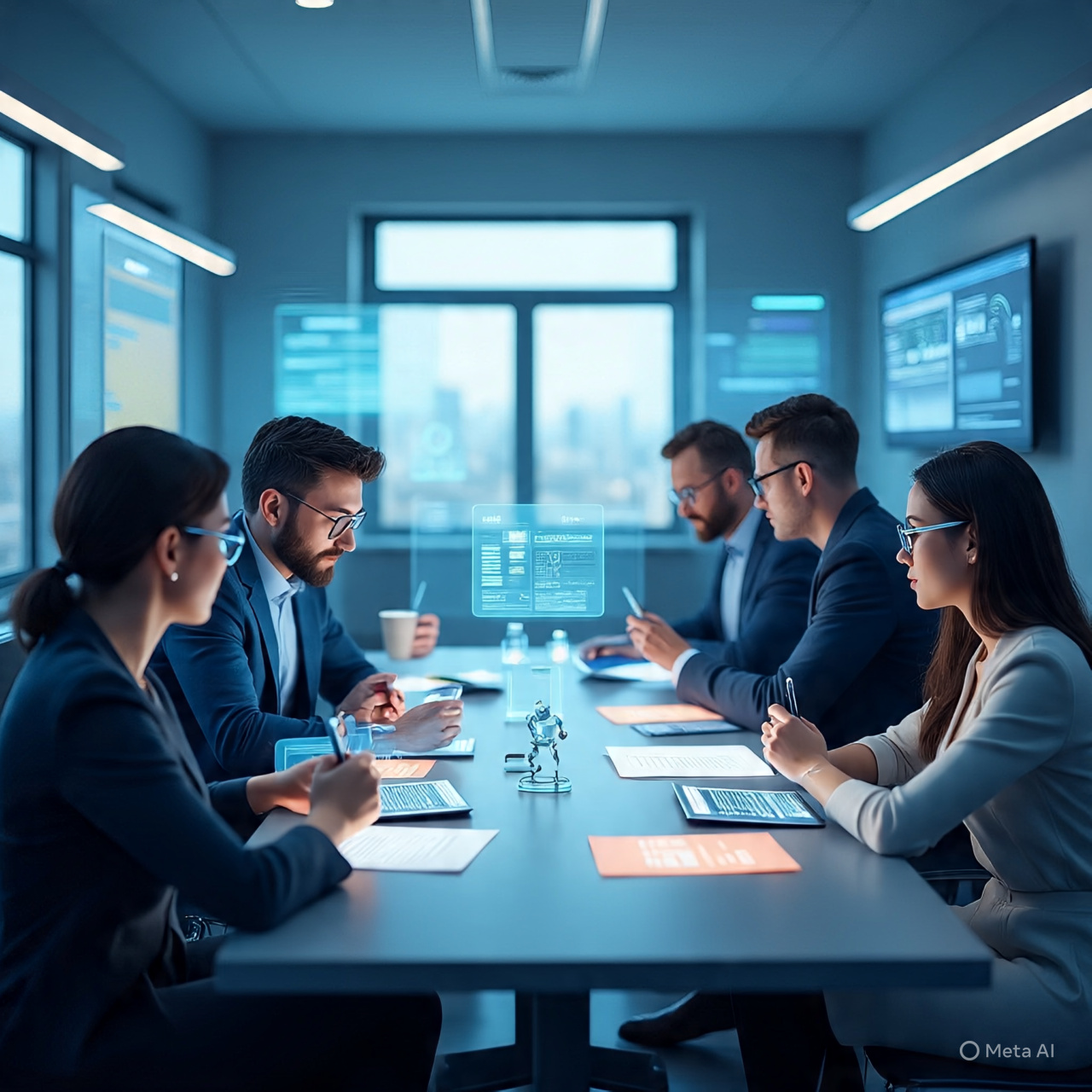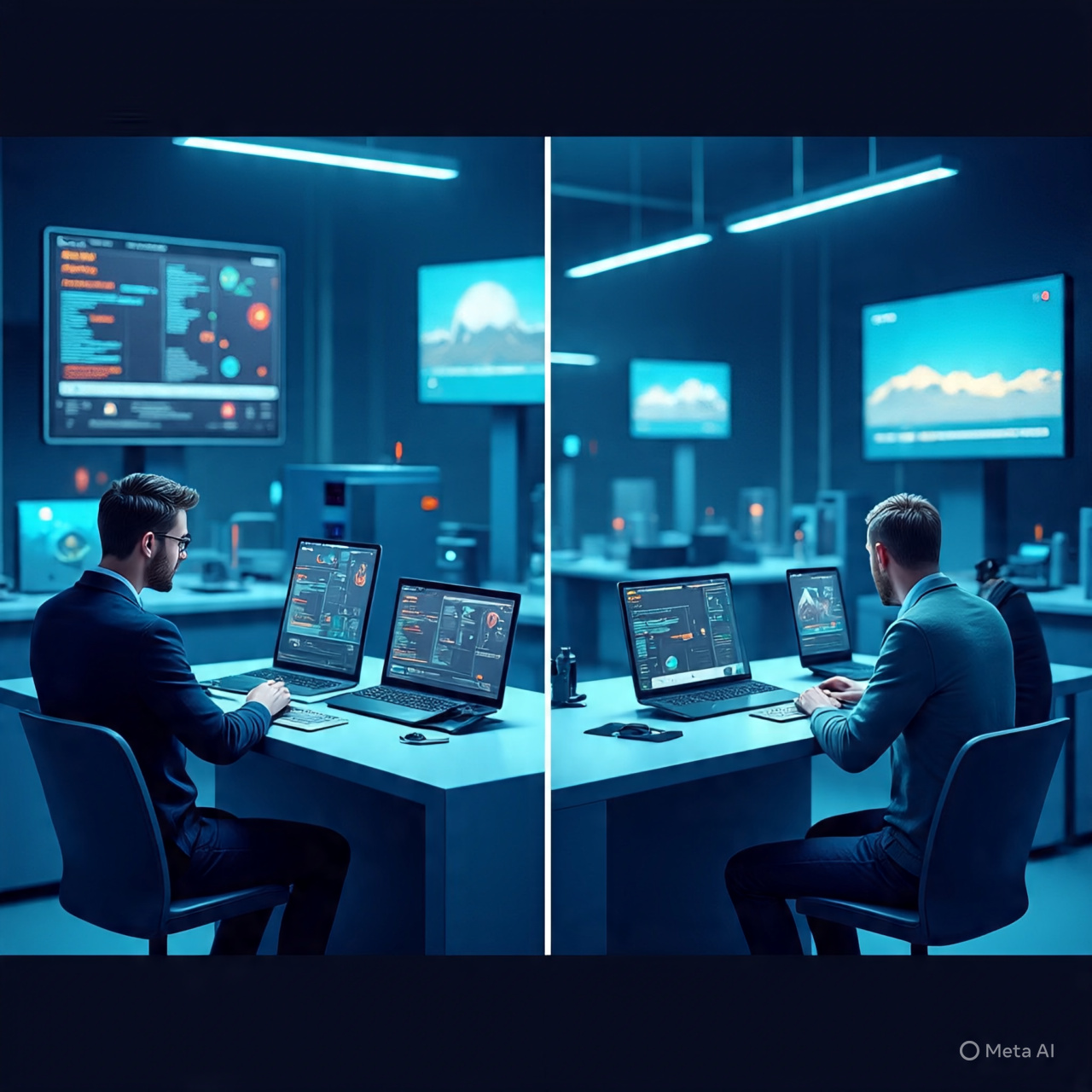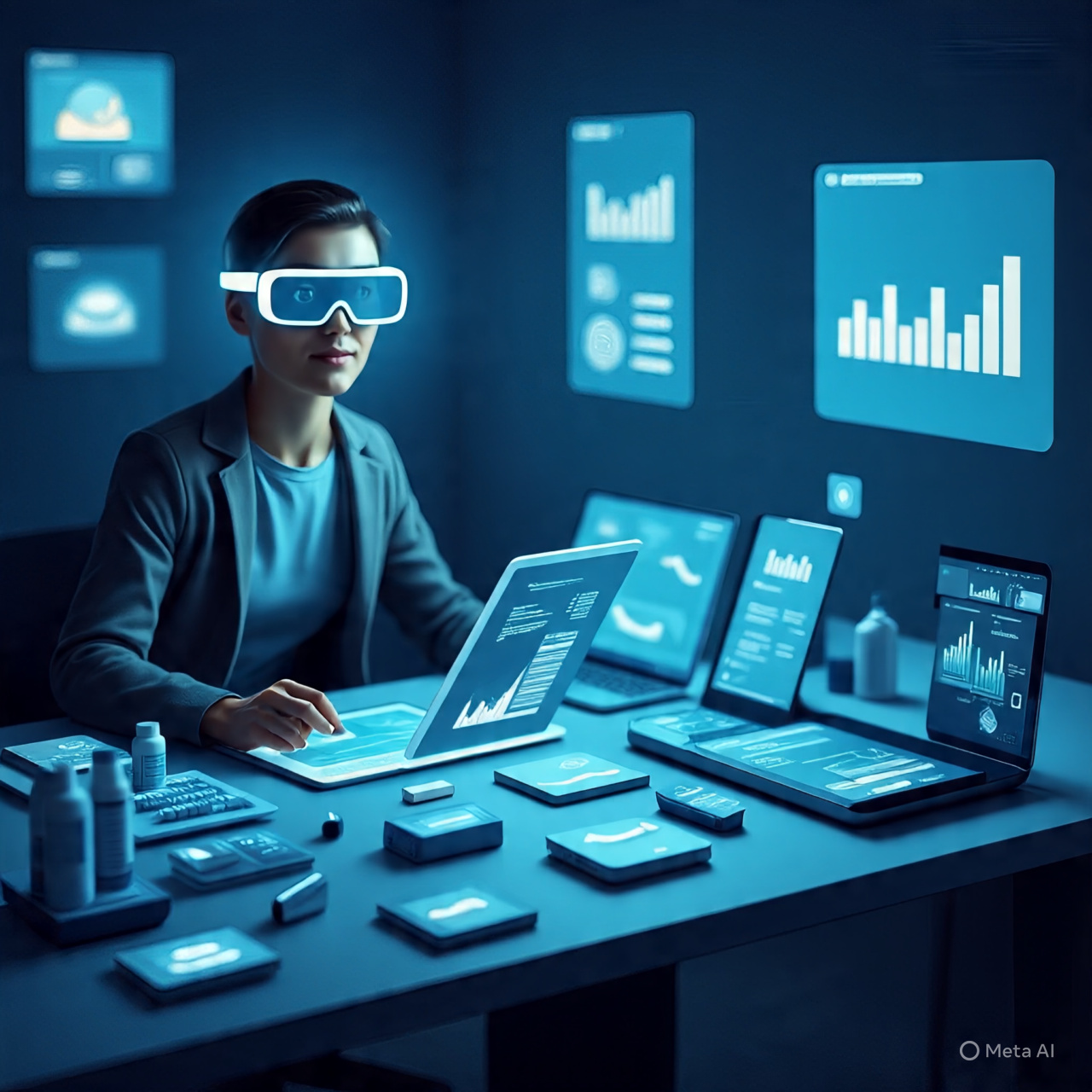Focus Keyword: Generative AI in Creative Industries
Table of Contents
- Introduction: The Rise of Generative AI
- What Is Generative AI?
- Key Areas Where Generative AI Is Revolutionizing Creativity
- Visual Arts and Design
- Music and Audio Production
- Film, Animation, and VFX
- Content Creation and Copywriting
- Fashion and Product Design
- Benefits of Generative AI in Creative Industries
- Challenges and Concerns
- Human vs Generative AI Creativity: A Comparison
- Popular Tools and Platforms in 2025
- Future Trends to Watch
- FAQs
- Conclusion
<a name=”introduction”></a>Introduction: The Rise of Generative AI
We are witnessing a creative revolution powered by Generative AI in creative industries. From music that sounds human-made to stunning visual art generated in seconds, AI is no longer just a tool — it’s a collaborator. As we move deeper into 2025, this fusion of machine learning and human imagination is reshaping industries that have relied on intuition, emotion, and expression for centuries.
<a name=”what-is-generative-ai”></a>What Is Generative AI?
Generative AI refers to artificial intelligence systems that can create new content. This includes:
- Text (e.g., ChatGPT)
- Images (e.g., DALL·E, MidJourney)
- Music (e.g., AIVA, Suno)
- Video (e.g., Sora by OpenAI)
- 3D models (e.g., NVIDIA’s GET3D)
Unlike traditional AI that classifies or analyzes data, Generative AI produces original material based on learned patterns.
<a name=”key-areas”></a>Key Areas Where Generative AI Is Revolutionizing Creativity
🎨 1. Visual Arts and Design
Generative AI has democratized art creation. Tools like DALL·E, Midjourney, and Runway ML let anyone generate high-quality illustrations and graphics from simple text prompts.
Use Cases:
- Marketing visuals
- Logo design
- Album covers
- Comic books
- NFTs
Example: Artists now use Midjourney to conceptualize fantasy scenes within minutes, something that used to take hours or days.
🎵 2. Music and Audio Production
Platforms like Suno AI, AIVA, and Boomy allow creators to produce background scores, jingles, and even full albums.
Use Cases:
- Soundtracks for games and films
- Podcast intros
- Royalty-free music creation
- AI singers (like those used on TikTok)
Example: AI-generated lo-fi beats are flooding Spotify playlists with minimal human intervention.
🎬 3. Film, Animation, and VFX
AI has entered post-production, animation, and visual storytelling.
Use Cases:
- Script writing (via ChatGPT)
- Storyboarding (using AI image tools)
- Deepfake technology
- Video upscaling and motion graphics
Example: Indie filmmakers use Runway’s Gen-2 to generate cinematic shots on a budget.
✍️ 4. Content Creation and Copywriting
From blogging to marketing copy, Generative AI in creative writing is reshaping how content is produced.
Use Cases:
- SEO blog writing
- Ad copy
- Email marketing
- Product descriptions
Example: Brands like HubSpot and Shopify are integrating GPT-4 to streamline marketing content.
👗 5. Fashion and Product Design
Designers now co-create with AI, generating thousands of prototypes or fashion sketches in moments.
Use Cases:
- Clothing line mockups
- 3D modeling for products
- Virtual fitting rooms
Example: Brands like Zara experiment with AI-designed fashion lines for faster seasonal launches.
<a name=”benefits”></a>Benefits of Generative AI in Creative Industries
| Benefit | Explanation |
|---|---|
| Speed and Efficiency | AI drastically cuts down time spent on ideation and creation. |
| Cost-Effective | Fewer resources are needed to generate high-quality outputs. |
| Accessibility | Anyone, regardless of skill level, can create compelling art or music. |
| Endless Experimentation | Creatives can iterate through thousands of ideas in minutes. |
| Personalization | Tailored content based on audience data is easier to generate. |
| Collaboration | Artists are now blending human creativity with AI capabilities for hybrid work. |
<a name=”challenges”></a>Challenges and Concerns
Despite its benefits, Generative AI in creative industries raises serious questions.
| Concern | Details |
|---|---|
| Job Displacement | Writers, designers, and musicians face fear of being replaced by machines. |
| Originality and Plagiarism | AI may unknowingly replicate copyrighted styles or compositions. |
| Ethical Misuse | Deepfakes, fake news, and manipulated media can be produced at scale. |
| Ownership Rights | Who owns the rights to AI-generated content? The creator or the model? |
| Quality Control | Not all outputs are perfect; human editing is often still required. |
<a name=”comparison”></a>Human vs Generative AI Creativity: A Comparison
| Aspect | Human Creativity | Generative AI |
|---|---|---|
| Originality | Rooted in emotions, experiences, and culture | Based on learned patterns from existing data |
| Speed | Time-consuming | Instant generation |
| Consistency | Varies with mood and skill | Highly consistent once trained |
| Emotional Depth | Deep emotional resonance | Mimics emotions but lacks genuine feeling |
| Scalability | Limited by time and resources | Mass content generation at scale |
| Flexibility | Highly adaptable | Limited to trained inputs and prompts |
Verdict:
While human creativity remains irreplaceable in terms of emotional connection, Generative AI offers unmatched speed, experimentation, and accessibility.
<a name=”tools”></a>Popular Generative AI Tools in 2025
| Tool | Use Case | Best For |
|---|---|---|
| ChatGPT-4.5 / GPT-4o | Content, scripts, dialogue | Writers, marketers, bloggers |
| DALL·E / Midjourney | Artwork, storyboarding | Artists, designers, game creators |
| Runway Gen-2 | Video generation, editing | Filmmakers, animators, YouTubers |
| AIVA / Suno | Music composition | Musicians, advertisers, content creators |
| Leonardo AI | 3D art & game asset design | Game developers, AR/VR creators |
<a name=”trends”></a>Future Trends to Watch in Generative AI and Creativity
1. AI-Human Co-Creation Becomes Norm
More tools are being designed for hybrid workflows — AI assists, but the human is in charge.
2. Real-Time Generative Content
Live music performances and interactive media powered by AI will become more popular.
3. Ethical Frameworks and Regulations
Global guidelines for AI-generated content will emerge to ensure fair use and intellectual property rights.
4. Custom AI Models
Artists and companies will train their own AI on specific datasets to generate content in unique styles.
5. Emotional AI
Emerging models will better understand and replicate tone, mood, and emotional expression.
<a name=”faqs”></a>FAQs About Generative AI in Creative Industries
Q1: Is Generative AI going to replace human creatives?
No, it’s more likely to augment human creativity rather than replace it. Many creatives are already using AI as a partner, not a competitor.
Q2: Can AI art be copyrighted?
This depends on jurisdiction. Some countries don’t recognize copyright for non-human creators, while others grant rights to the user who prompted the output.
Q3: How do I start using Generative AI for creativity?
Start with user-friendly tools like ChatGPT for writing, DALL·E for images, or Suno for music. Most tools offer free trials or freemium versions.
Q4: Is AI-generated content safe for commercial use?
Generally yes, but always check for licensing and terms of service. Use platforms that offer commercial rights.
Q5: Are there ethical concerns I should be aware of?
Absolutely. Avoid generating harmful, misleading, or plagiarized content. Transparency and responsible use are key.
<a name=”conclusion”></a>Conclusion
Generative AI in creative industries is not a threat — it’s a transformation. Like photography once challenged painting, or synthesizers redefined music, AI is offering new tools, perspectives, and opportunities.
It empowers solo creators, fuels innovation, and pushes the boundaries of what’s possible in art, music, film, and beyond. The key is not to resist it but to learn how to work with it, ethically and creatively.
As we look to the future, the most exciting works won’t be human or AI-made — they’ll be the result of both.
Would you like this article exported as a downloadable PDF, or split into social media snippets?
Ask ChatGPTTools




